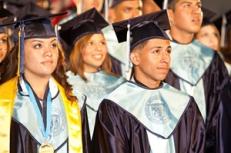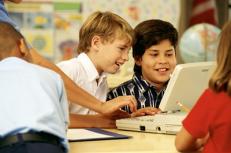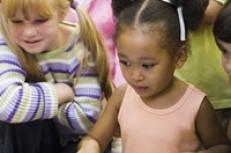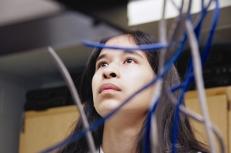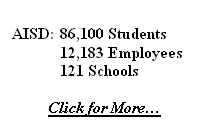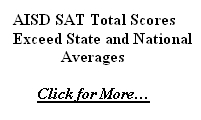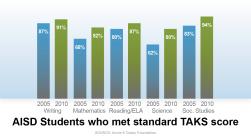Is adaptability one of the keys to educational success in a global economy?
I believe it is. At the heart of Darwin’s discussion of evolution, he notes that it won’t really be the brightest or the strongest or even the ones with the strongest will that survive and evolve to a higher level. It will be those who know how to adapt.
When employers talk about the new basic skills needed for the 21st-century workplace, adaptability is at the top of their list. Business models are constantly changing. Technologies and the new economies and market opportunities they create are always in flux. The rate of change is continually accelerating. If you were to teach a student a set of skills that only works in a current job, then that set of skills would probably be obsolete by the time the student graduated. You have to teach the skills and abilities that enable the student to be adaptable to a changing world.
Has standardized testing exerted an outsized influence on schools today?
The public perceives standardized testing as the chief measure of a school’s success. However, the attention to test scores has come at the expense of teaching the types of skills that aren’t measured on the tests. Educating kids solely on standards that are on a bubble sheet is not fully preparing them for life in the real world. These tests measure only a portion of what a person needs to succeed in the world; they don’t measure creativity, innovation, and many other qualities necessary for success
A fundamental component of teaching adaptability is developing the whole child: a child who has not only mastered the three R’s, but who can also problem solve, think creatively, work successfully with groups, and exhibit emotional and behavioral intelligence. The goal of developing the whole child goes far beyond state standards, which typically are the bare minimums. Recognizing this, the AISD Board reshaped its direction with the adoption of a five-year strategic plan in December 2009. Now our focus is on preparing kids for college, career, life after graduation, and in particular, preparing kids for the jobs that will be fueling the Austin and global economies.
Learn More About AISD
Do you believe that the future will be one of constant change?
Yes, definitely. Over time, the job skills for any profession have changed. From the Agrarian Age through the Industrial Age, and now in the Information Age, the adaptive nature of technology is driven by modification and invention. Today we are experiencing the largest transformation of the labor markets in the shortest amount of time. The future landscape of business will be one of constant change, and adapting to that change is essential for success.
What will the Austin business community need in the future?
Austin’s business community will be creating new jobs that demand workers who have the ability to analyze and solve problems. Our students must understand project-based learning, understand how to work in teams, and have creative thinking in their tool belts to be successful in life.
To borrow a phrase from Sony, we must prepare kids for jobs that don’t yet exist using technologies that haven’t been invented in order to solve problems that we don’t know exist yet. As you might imagine, translating that into a teacher’s lesson plan is a challenge. But once you are open to the idea of adaptability and seek opportunities for students to problem solve, work in teams, and use technology, the solutions emerge. Today’s students are open to and generally embrace these learning opportunities.
How do you support teachers’ adaptability?
We support teachers’ adaptability in some of the same ways that we support our students’ adaptability: using technology, working in team-oriented environments, and employing best practices. For example, the importance of technology is well illustrated at Akins High, a New Tech School. Our teachers at New Tech may not have the full technology skill sets at first, but they have interest and drive, and they want to work in a challenging environment. They are quite willing to adapt.
The Ann Richards School, an all-girls’ school, is another example of AISD adapting to the needs of our students to better prepare them for the future. There, the girls are studying biotechnology as part of an engineering program with the latest equipment donated by 3M. Research shows that a lot of girls aren’t exposed to math and science in quality ways that support their academic growth in these fields.
Both Akins High and Ann Richards are exciting and dynamic schools that require teachers to continuously develop professional skills and students to accept responsibility for their learning, engage in inquiry, ask good questions, and challenge their teachers and school administrators.
Learn More About AISD
AISD is facing significant fiscal pressures right now. Is there a teachable moment here for students?
Our district values students as a constituency, and we value their feedback. They will see this year how we deal with difficult budget choices that will most certainly affect their schools. We can model for them that you must persevere even when conditions are not ideal. You must compromise, negotiate, and adapt. We will hold a number of community dialogues to gather input on the development of the draft budget; a special invitation will be extended to students. I try to reach students through several media: IdeaJams, campus-based newspaper and video interviews, twitter, blogging, and video.
Can you contrast the labor agreement situation in Austin with other places you’ve been?
We’ve generally had a positive working relationship with Education Austin. In other districts I’ve worked in, some with up to 20-plus employee unions, the agreements were very restrictive, often limiting the administration’s ability to observe classroom teaching. I feel very fortunate that our consultation agreement with Education Austin fosters a culture of openness, and allows much more coaching and work in supporting teaching excellence.
Your closing thoughts?
We like this new Forefront platform as an opportunity to reach more people, and to help build consensus around important issues in the Austin community. In the past year the Austin schools have made significant strides in student performance, and we want to continue doing that despite the budget challenges we are facing. Our students must succeed for our community to prosper.





